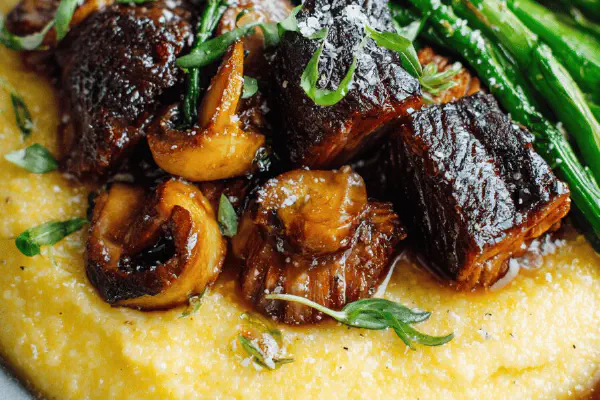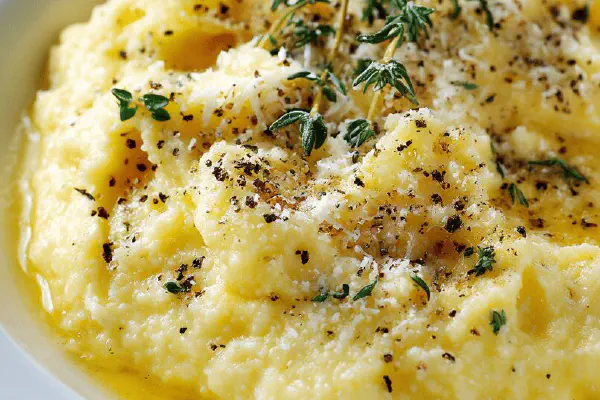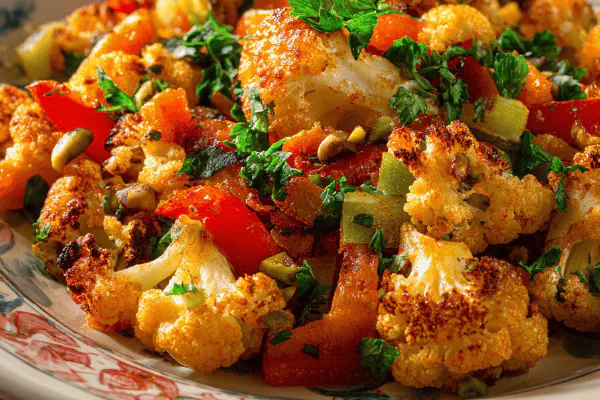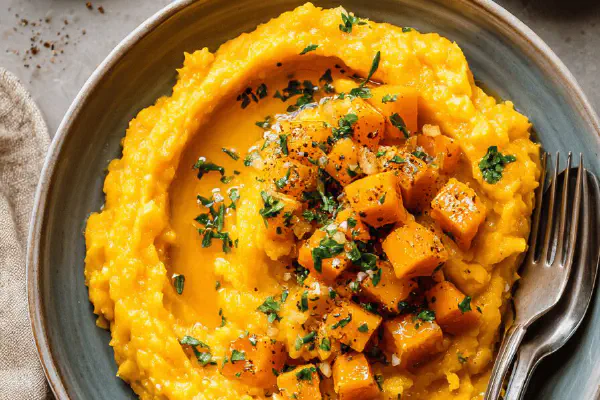Creamy Quick Polenta Twist

By Emma
Certified Culinary Professional
Ingredients
- 750 ml (3 cups) vegetable broth
- 110 g (2/3 cup) quick-cook polenta
- 30 g (1/3 cup) nutritional yeast flakes
- 80 ml (1/3 cup) coconut cream, warm
- Salt and freshly ground black pepper
About the ingredients
Method
- Heat vegetable broth in a heavy-bottomed saucepan until just boiling. Pour polenta in a slow stream, whisking vigorously to prevent lumps. Reduce heat to low immediately; polenta should bubble gently, not roar.
- Stir constantly, using a wooden spoon to scrape the bottom and sides. Texture will start thickening at about 8 minutes; listen for a soft popping sound, signaling solubilization.
- Add a splash more broth if it thickens too fast or looks gluey. Be wary of dry patches on the pot’s bottom—they burn fast and ruin texture.
- Cook for total 10-12 minutes, stirring steadily. When polenta feels creamy but firm, pull off heat.
- Off heat, fold in nutritional yeast and warm coconut cream with minimal stirring; avoid over-mixing or it loses silkiness.
- Taste for salt and pepper. Needs seasoning since yeast and veg broth are milder than cheese and chicken stock.
- Serve immediately—polenta firms quickly as it cools. For leftovers, reheat gently with splash of broth or water.
- Pair with robust braised short ribs, sausage-wrapped involtini, or roasted root vegetables; avoids dairy but keeps umami punch.
- Common pitfall: under-stirring leads to lumps; over-stirring yields gluey mess. I’ve burned polenta trying to rush—patience is key here.
- Substitute coconut cream with cashew cream if preferred; nutritional yeast can be replaced by finely grated pecorino if dairy isn’t an issue.
Cooking tips
Chef's notes
- 💡 Start with boiling broth only then pour polenta slow like drizzle. Whisk fast first couple minutes—stop lumps from settling bottom. Switch to wooden spoon once thick; less drag feels better. Keep heat low always—polenta is delicate. Listen close for tiny pop sounds. If silent—undercooked, loud roar means scorching; move quick sides and bottom.
- 💡 Add broth sparingly. Too fast makes gluey mess, too little dry spots burn. Spot dryness? Splash more broth, stir in gently. Avoid slapping down heat—polenta wants coaxing. After about 8 minutes texture thickens, and small pops start; that sound tells starch breaking down; feel spoon resistance to judge creaminess.
- 💡 After cooking off heat fold nutritional yeast and warm coconut cream gently. Don’t beat or want glue. Yeast adds cheesy umami without dairy bite. Coconut cream gives silkiness but cold lumps kill mouthfeel. If prefer cashew cream sub but prep needed—blend and strain. Salt carefully late; yeast and veg broth mild; taste often.
- 💡 Watch for lumps in early cook. Stirring steady but not frantic. Under-stirring lumps trap, over-stirring makes pasty glue. I’ve burned pot rush stirring; patience rewarded. Remove from heat at thick but still creamy stage; residual heat firms fast. Serve immediately or reheat with broth or water splash.
- 💡 Ingredients note: Quick polenta brands vary—adjust liquid and time. Vegetable broth lower fat than chicken stock; flavor lighter but fresh vegetal. Use good broth, no cubes. Heavy-bottom pan best for even heat. Nonstick OK but I prefer thick pan; heat control matters. Timing and senses trump timers; smell, sound, texture guide more than minutes.
Common questions
How to prevent lumps?
Pour polenta in slow stream; whisk fast first few minutes; constant stir prevents clumps. Cold broth or dumping polenta fast causes lumps; use wooden spoon after thickening to scrape sides and bottom.
Can I substitute coconut cream?
Yes, cashew cream works but blend and strain to avoid grit. Heavy cream if not dairy-free. Warm the cream to avoid cold lumps in mix; adds silk texture without breaking polenta consistency.
What if polenta burns or sticks?
Usually heat is too high or under-stirring leaves dry spots. Lower temperature as soon as polenta added. Stir with wooden spoon scraping bottom regularly. Add splash broth to loosen any sticking areas immediately.
How to store leftovers?
Cool fast, refrigerate covered. Reheat gently with splash of broth or water; stir to loosen. Freezing possible but texture changes, more glue likely. Avoid reheating dry or high heat; polenta firms and clumps fast when cold.



